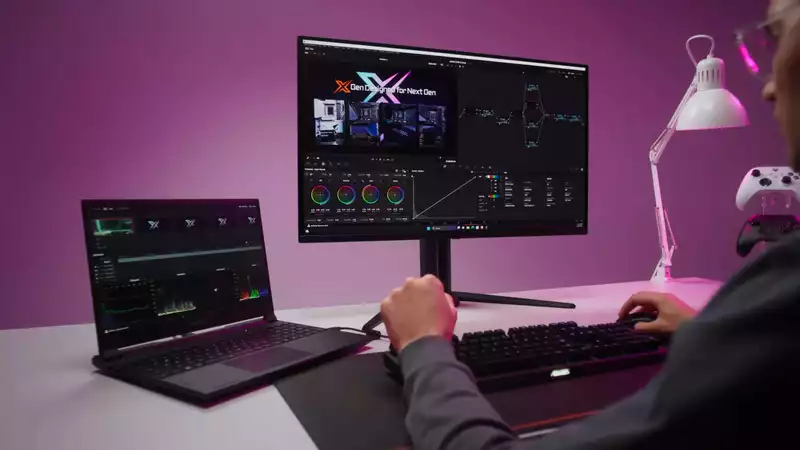The VESA organization is a huge group of electronics and semiconductor manufacturers working together to create various standards for the industry to follow; DisplayPort is perhaps the most well-known recent technology, and VESA has just updated the specification to v2.1a. The main change is the replacement of the DP40 cable specification with DP54, which allows up to 8K 240Hz resolution with a 2m passive cable. This is a big improvement, but not really significant.
The DisplayPort specification details how images are sent from a source (such as a graphics card) to a sink (such as a monitor) over a 4-lane digital connection. Depending on which version of DisplayPort both the sink and source support, different signal modes can be used. [For DP1.4, the most common configuration in use today, the fastest mode is HBR3 (High Bit Rate), which sends data at up to 8.1 Gbps per lane.
DisplayPort 2.0 adds three additional modes, UHBR10, UHBR13.5, and UHBR20. In the latter case, each lane provides a peak transmission rate of 20 Gbps, as its name implies. However, even if both the sink and source have this capability, the actual data rate could be much lower if the connecting cables are not sufficiently capable.
For this reason, VESA has developed a new cable specification in the DisplayPort 2.1a update (as reported by Tom's Hardware), and the latest revision, DP54, requires that a 2m passive power cable can support at least UHBR 13.5 mode requires manufacturers to guarantee that the cable can support at least the UHBR13.5 mode.
This is double the length of the previous DP40 specification, which was always ridiculously short and required both sink and source to be UHBR20 compliant. Now it only needs to support 13.5 modes, which makes much more sense.
In the PC gaming world, DisplayPort 2.0/2.1 sources are not so common; AMD's latest Radeon RX 7000 series is version 2.1, the fastest mode in which UHBR13.5 is supported, while the previous RX 6000 series and all Nvidia cards are version 1.4a. Nevertheless, DisplayPort 2.1 sync is even rarer, and we did not see many monitors using this specification at this year's CES event.
One such example is the Gigabyte Aorus FO32U2P, which we mentioned at the beginning of this news item. It is 4K 240Hz, but so were many other models shown at CES, all of which were still DP1.4a: what good are DP54 cable specifications?
VESA-certified DisplayPort cables are not cheap, and the ones that come with monitors and graphics cards are rarely certified and almost always passive. This means that there is no additional circuitry to boost the signal based on the length of the cable, which greatly limits the transmission speed.
So if you were planning to get a new monitor from Gigabyte and pair it with a Radeon RX 7900 XTX, you might find yourself having to pay a fortune for a DP54 certified high-end cable. [This is because 4K 240Hz is possible using the much slower HBR3 transmission mode, although it uses DSC (Display Stream Compression). It is automatically enabled the moment the resolution and refresh rate are set to a certain level, and the image sent to the monitor is compressed, but you won't really notice it.
VESA has always set the DisplayPort specification much higher than what is actually used in the market, but even though the latest CPUs, motherboards, and SSDs only support version 5, PCI Express is currently version 6 (in development version 7), I think it is no different.
Someday in the future, 4K 480Hz or even 8K 240Hz may become the norm, but it will not happen anytime soon.


Comments